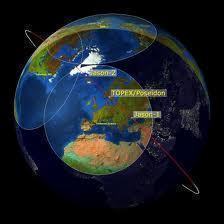Round Trip Time
Round Trip Time, or RTT, also known as “round-trip delay time” is the time it takes for a signal to be sent from a transmitter to a receiver plus the time it takes to verify that the signal has been received; therefore, Round Trip Time is the time it takes for a signal to be sent from one location to another and back again. RTT almost always relates to telecommunication, but may refer to the Internet, satellite communications, or radar systems.
How Round Trip Time Works
Round Trip Time is dependent on a number of factors, including the data transfer rate of the source, the nature of the transmission medium, the distance between the source and the destination, the number of nodes between the source and the destination, the amount of traffic or bandwidth on the network that is being used, the number of other requests being handled by the receiver or nodes along the transmission path, the processing capabilities of the source, receiver, and nodes, and the presence of interference.
Applications
Round Trip Time can refer to a wide variety of transmissions, such as copper-cable Internet transmissions, wireless Internet transmissions, satellite transmissions, and cell phone transmissions. In Internet transmissions, the RTT may refer to “ping time”, which is the amount of time data can be sent to a remote location and sent back, and may be identified by using the ping command. In satellite transmissions, the RTT can be calculated by using the Jacobson/Karels algorithm.
Advantages
Calculating a transmission’s RTT is advantageous because it allows users and operators to identify how long a transmission will take to complete and how fast a network can operate. RTT in both Internet and satellite transmissions is particularly important because it allows network providers to establish data speeds and allocate bandwidth to subscribers accordingly.



Comments - No Responses to “Round Trip Time”
Sorry but comments are closed at this time.